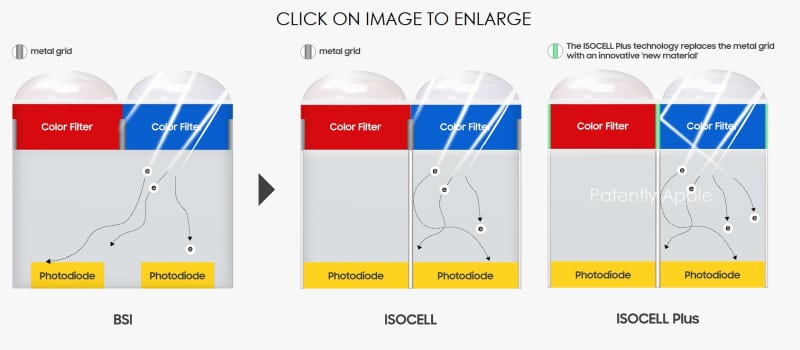Samsung’s Note 9 Will Feature New ‘ISOCELL’ Tech to Rival iPhone X
 Credit: Phone Arena
Credit: Phone Arena
Toggle Dark Mode
Smartphone cameras have evolved substantially over the years, with both Apple and several high-end Android OEMs investing heavily in the development of enhanced components, sensors and software meant to maximize image quality.
Back in November, Apple let loose its most ambitious camera technology yet, when it launched the iPhone X with a TrueDepth 3D sensor for Animoji and Face ID biometric security, a highly-advanced VCSEL system, and powerful features like Portrait Lighting.
There’s no question that Apple has established fame for delivering high-quality camera tech, year after year. But Apple isn’t the only smartphone-maker who believes that cameras are among its device’s most compelling selling-points.
Samsung, in its own bid to outshine iPhone X, is slated to incorporate a new and sophisticated camera tech dubbed ‘ISOCELL Plus’ — promising to push “pixel isolation technology” to a whole new level — when it launches on its upcoming Galaxy Note 9 flagship later this summer.
Referring to itself as “a world leader in advanced semiconductor technology,” Samsung showcased its new ‘ISOCELL Plus’ technology this week at Mobile World Congress, Shanghai, promising its CMOS image sensors would be capable of capturing and retaining “more light, significantly increasing light sensitivity and color fidelity,” the company said, adding that “smartphone consumers can now expect even more accurate and clearer photos in challenging light environments.”
How Does It Work?
To capture the best photos possible, Patently Apple explains that CMOS imaging sensors must be able to retain as much light, or photons, as possible, in order to transmit the most accurate color information to the photodiode, noting how Samsung effectively addressed this issue when it introduced ISOCELL technology back in 2013.
ISOCELL, according to Samsung, forms a “physical barrier between neighboring pixels,” and inso doing is able to reduce color crosstalk while expanding the “full-well capacity” of the CMOS sensor.
“This enables each pixel to absorb and hold more light than the conventional backside-illuminated (BSI) image sensor design for superior image quality.”

With ISOCELL Plus, Samsung has employed an even more optimized pixel architecture, allowing the company to push “pixel isolation technology” to entirely new heights.
“In the existing pixel structure, metal grids are formed over the photodiodes to reduce interference between the pixels, which can also lead to some optical loss as metals tend to reflect and/or absorb the incoming light,” the company explains, adding that for ISOCELL Plus, Samsung “replaced the metal barrier with an innovative new material developed by Fujifilm, minimizing optical loss and light reflection.”
In addition to lighting enhancements of 15 percent, ISOCELL Plus is optimized to deliver high color fidelity while enabling much smaller (0.8-micrometer) pixels without sacrificing performance.
A Samsung representative speaking on the sidelines of MWC Shanghai noted that “The new ISOCELL Plus will start to be mass produced for adoption by new smartphones slated for launch in the second half of the year,” hinting that the South Korean tech juggernaut’s upcoming Galaxy Note 9 flagship will be the first of its upcoming flagships to adopt the new technology.






